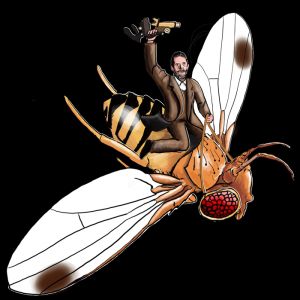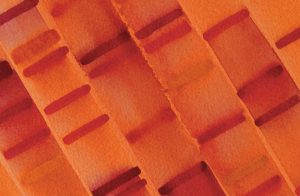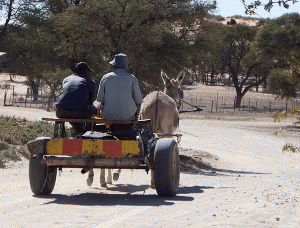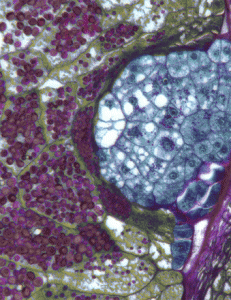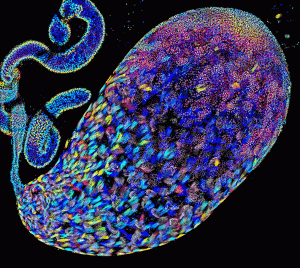Enter your address to receive notifications about new posts to your email.
Science & Publishing
-
Science & Publishing
How studying bakers’ yeast unlocked the secrets of our body’s recycling plants
In the late 1980s, Japanese biologist Yoshimori Ohsumi finally got to run a lab of his own and began casting around for a suitable topic to occupy himself and his new grad students. At 43 years old, he did not consider himself much of a scientific success; he was now hoping to corner a niche of biology…
-
Science & Publishing
Can gene drives survive in the wild?
Efforts to engineer genomes in wild populations have huge potential for good—but the real world is more complicated than the lab. Until now, humans have never been able to seriously consider how to cheat evolution. But now that the CRISPR/Cas9 system has made genome editing easy and efficient, it might be possible to manipulate the…
-
Science & Publishing
Happy 150th to a fruit fly wrangler who changed the world
In Kentucky 150 years ago today, a child was born who would—with the help of a hardy inhabitant of trash cans and fruit bowls— grow up to change the world. That boy was Thomas Hunt Morgan. By the 1900s, the energetic young Morgan had become a well-respected expert investigating questions in experimental embryology and animal regeneration.…
-
Science & Publishing
Friendly dogs with floppy ears: The domestication syndrome
The mild temperament that distinguishes the family dog from its wolf ancestors is just one of a whole array of traits that seem to have evolved during domestication. Domestication syndrome refers to the suite of characteristics commonly observed in domestic animals, including docility, shorter muzzles, smaller teeth, smaller and floppier ears, and an altered estrous…
-
Science & Publishing
Hubby & Lewontin: Problems and Conversations
The beautiful cover of the August issue of GENETICS was created by artist Michele Banks to commemorate the fiftieth anniversary of a pivotal moment in the history of evolutionary biology: the 1966 publication of a pair of GENETICS papers using protein electrophoresis to reveal that natural genetic diversity is bountiful. Thanks to a conversation between…
-
Science & Publishing
New in G3: coffee genome, dog diseases, and mouse infertility
Check out the September issue of G3! Investigations Retrotransposon Proliferation Coincident with the Evolution of Dioecy in Asparagus Alex Harkess, Francesco Mercati, Loredana Abbate, Michael McKain, J. Chris Pires, Tea Sala, Francesco Sunseri, Agostino Falavigna, and Jim Leebens-Mack G3 September 2016 6:2679-2685; Early Online June 24, 2016 doi:10.1534/g3.116.030239 Abstract | Full Text | Full Text…
-
Science & Publishing
Kindred and KhoeSan: African ancestry is tied to ecogeography
Geography and ecology are key factors that have influenced the genetic makeup of human groups in southern Africa, according to new research discussed in the journal GENETICS, a publication of the Genetics Society of America. By investigating the ancestries of twenty-two KhoeSan groups, including new samples from the Nama and the ≠Khomani, researchers conclude that…
-
Science & Publishing
September GENETICS Highlights
Check out the September issue of GENETICS by looking at the highlights or the full table of contents! ISSUE HIGHLIGHTS This Month’s Centennial Articles Sydney Brenner on the genetics of Caenorhabditis elegans, pp. 1-2 Bob Goldstein Associate Editor Bob Goldstein introduces the 1974 Classic reporting Sydney Brenner’s first Caenorhabditis elegans mutant screens, stimulating discoveries from thousands of researchers that…
-
Science & Publishing
An executive decision
I am pleased to announce the appointment of Tracey DePellegrin as the new Executive Director of the GSA. Tracey has been the Executive Editor of our two journals, GENETICS and G3. Those of you who have not been president of the GSA—a population that included me until this year—may well be asking, “What does an…
-
Science & Publishing
Incredible Images from #TAGC16
The Allied Genetics Conference was a combined meeting of seven genetics research communities held July 13-17, 2016 in Orlando, Florida. Many talks given throughout the meeting featured compelling images and videos that generated a lot of buzz in various communities. Here, Genes to Genomes is excited to highlight just a few of the wonderful scientific images shared at #TAGC16.…
-
Science & Publishing
Trying to Find your Way in the Nervous System? C. elegans can help!
Guest post by Daniel G. Taub. With billions of neurons in the human brain, making the right connections during development seems a daunting task. A developing neuron often follows the lead of trailblazers, using existing bundles of axons called axonal tracts as a guide. But how does the original axonal tract get laid down? In…



